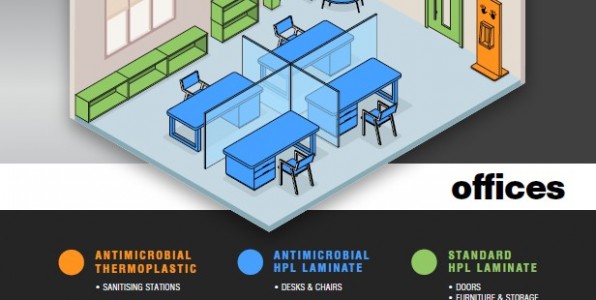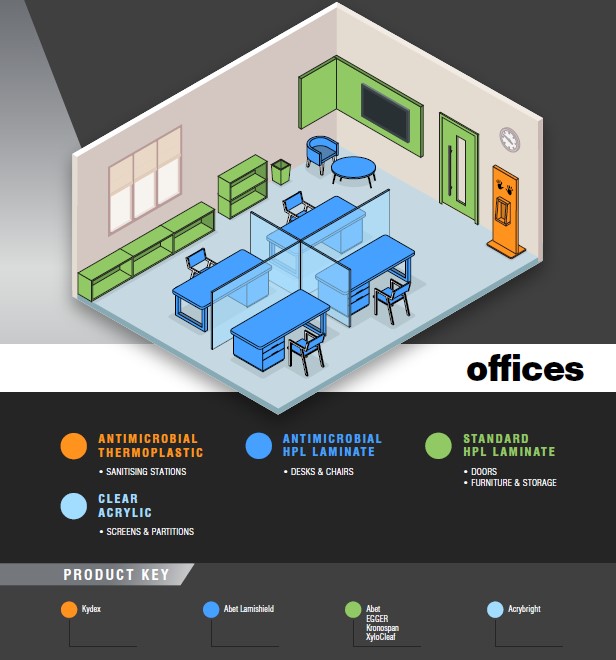Hygienic materials guide published to support specifiers

Hygienic materials guide published to support specifiers

A series of guides for specifiers have been launched to explain the hygienic properties of materials that can be used for surfaces and protective screens.
Bringing together a suite of options, they are organised into categories based on their performance and potential uses. They were developed by materials supplier James Latham and cover five sectors: retail, education, leisure and hospitality, offices and healthcare.
Steve Johnson of the Advanced Technical Panels division specialises in health-related products at Lathams.
He said: “There are many products available and it is not always clear what the differences are between them. For example, there is a lot of confusion between anti-microbial and anti-bacterial products. The difference is that anti-bacterial materials prevent bacteria from growing on their surface, while anti-microbial products halt the growth of bacteria and a broader range of viruses, organisms, protozoa, and fungi such as mould or mildew. This makes them significantly better for high-use surfaces.�
Top of the list for performance is advanced thermoplastic KYDEX. Mouldable to any shape, it is highly robust and has inherent hygienic qualities. It is often used for items such as worktops, counters and desks, wall panels, doors and furniture.
Steve added: “KYDEX is perfect for any environment that is subject to high traffic and needs to be kept clean. It can withstand tough cleaning products, without any staining, fading or surface damage, and contains Microban for anti-microbial protection.
“As a homogeneous product, any damage to the top layer doesn’t affect its anti-microbial properties or visual impact. Also, because it can be colour-matched, it is great for branded environments.�
Unlike KYDEX, which is more suited to an off-site manufacturing process, other products within the guide can be easily added to existing surfaces and therefore offer a much quicker turnaround. These include laminates, with Abet Lamishield the highest performer.
Abet Lamishield is an anti-microbial laminate that incorporates silver-ions within the decorative layer. Utilising BioCote technology, it inhibits surface growth by 99.9%. It is one of the only certified anti-microbial laminates and when combined with good cleaning practices it is highly effective.
Where barriers or protection are needed, the Lathams guide recommends AcryBright, a lightweight clear acrylic sheet ideal for screens and sneeze guards. While costing slightly more than a standard piece of acrylic, it is more hardwearing, something that Steve believes makes it worth the investment.
He added: “These materials are going to be around for a while and will need to be cleaned more often, with higher strength cleaning chemicals. These chemicals can cause damage, from small surface scratches through to potential warping or clouding of the screen.
“This damage not only reduces the hygienic properties of the product but also affects its visual appeal. Why pay twice when there is a better option available now?�
Other categories within the guide include Compact Grade Laminates (CGLs) and Solid Surfaces, both highly recognised for their robustness and resistance to intensive cleaning regimes. Both products are solid sheet materials, which will not delaminate when exposed to the rigours of repeated cleaning with detergents and other chemicals. A range of options from market leading brands such as HIMACS®, Avonite, Kronospan, Egger and Xylocleaf mean that there are colours and textures to suit any design scheme.
Issued on behalf of James Latham by Liz Male Consulting Ltd.
Comments are closed